Recruitment
In the early decades little recruitment was necessary and applicants to enter the school were generally readily accepted. Furthermore, until 1928, new students joined the school immediately their application was accepted meaning that students in class were all at different stages of training. From 1928 on, students were admitted in blocks, typically quarterly.
Numbers of new entrants was closely aligned with the hospital’s need for nurses, facilitated by regular meetings of the Matron with the Medical Superintendent. In the end the proposed entry numbers required signing off by the Hospital Board.
Waiting lists of prospective probationers were kept. As an example, in 1931 there were 80 names on the waiting list.
In 1945 a booklet entitled "My Diary - by Nurse Gardner" was prepared. (Nurse Gardner was a pseudonym).
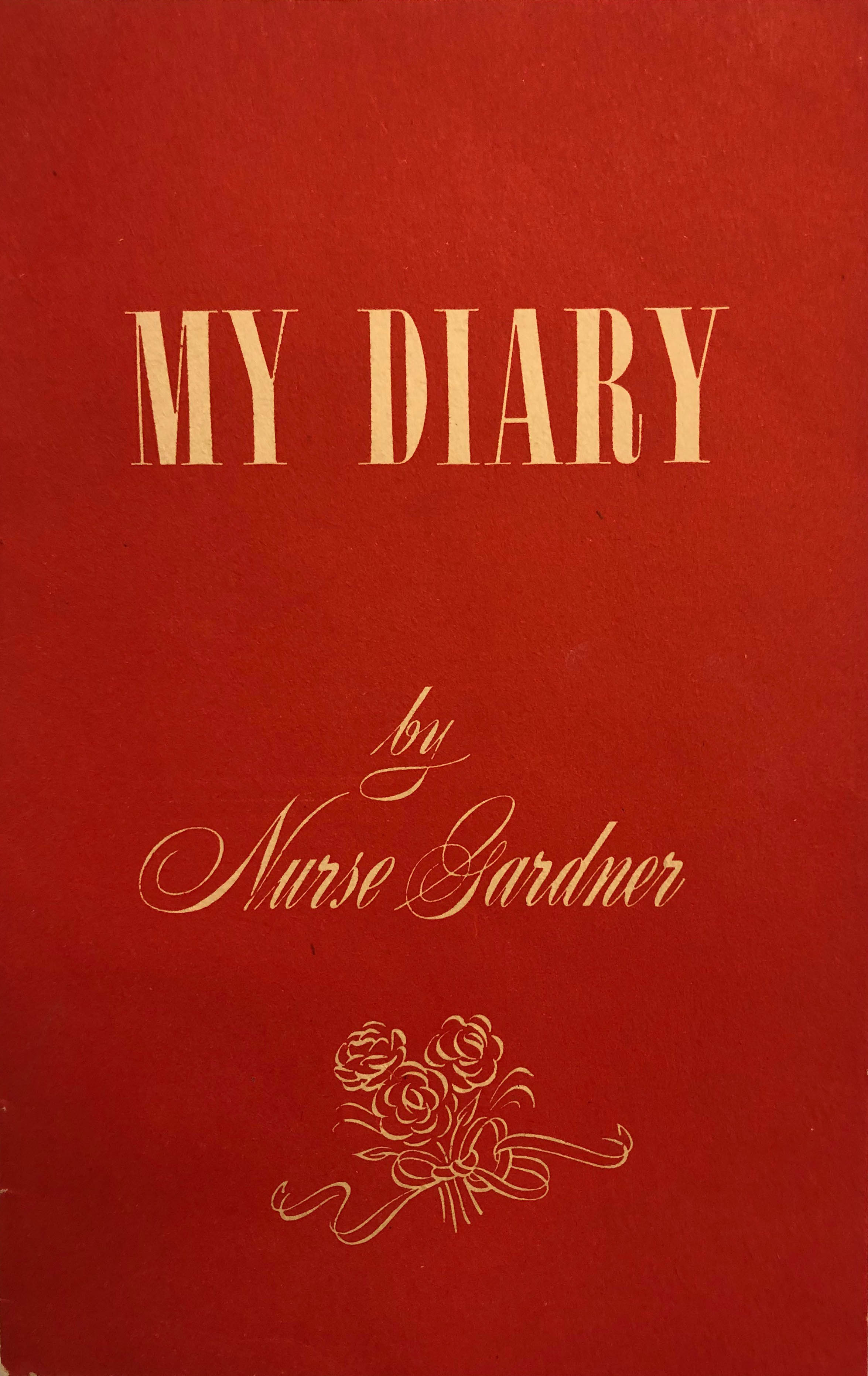
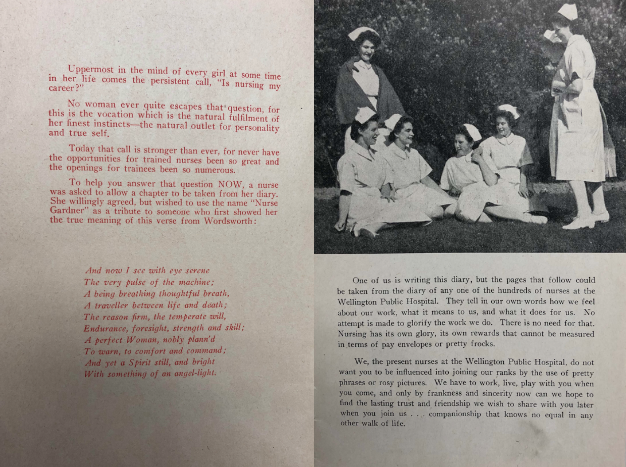
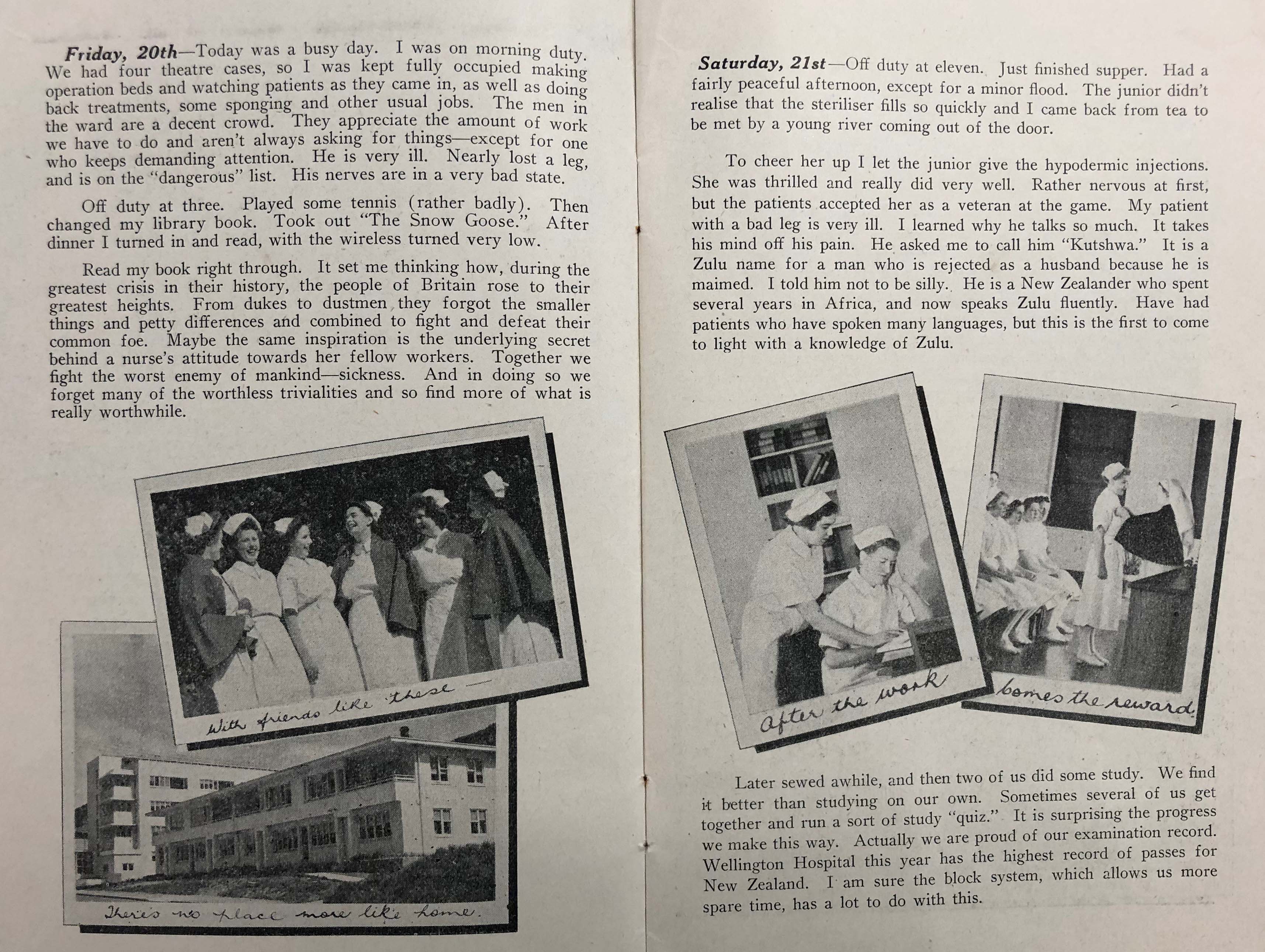
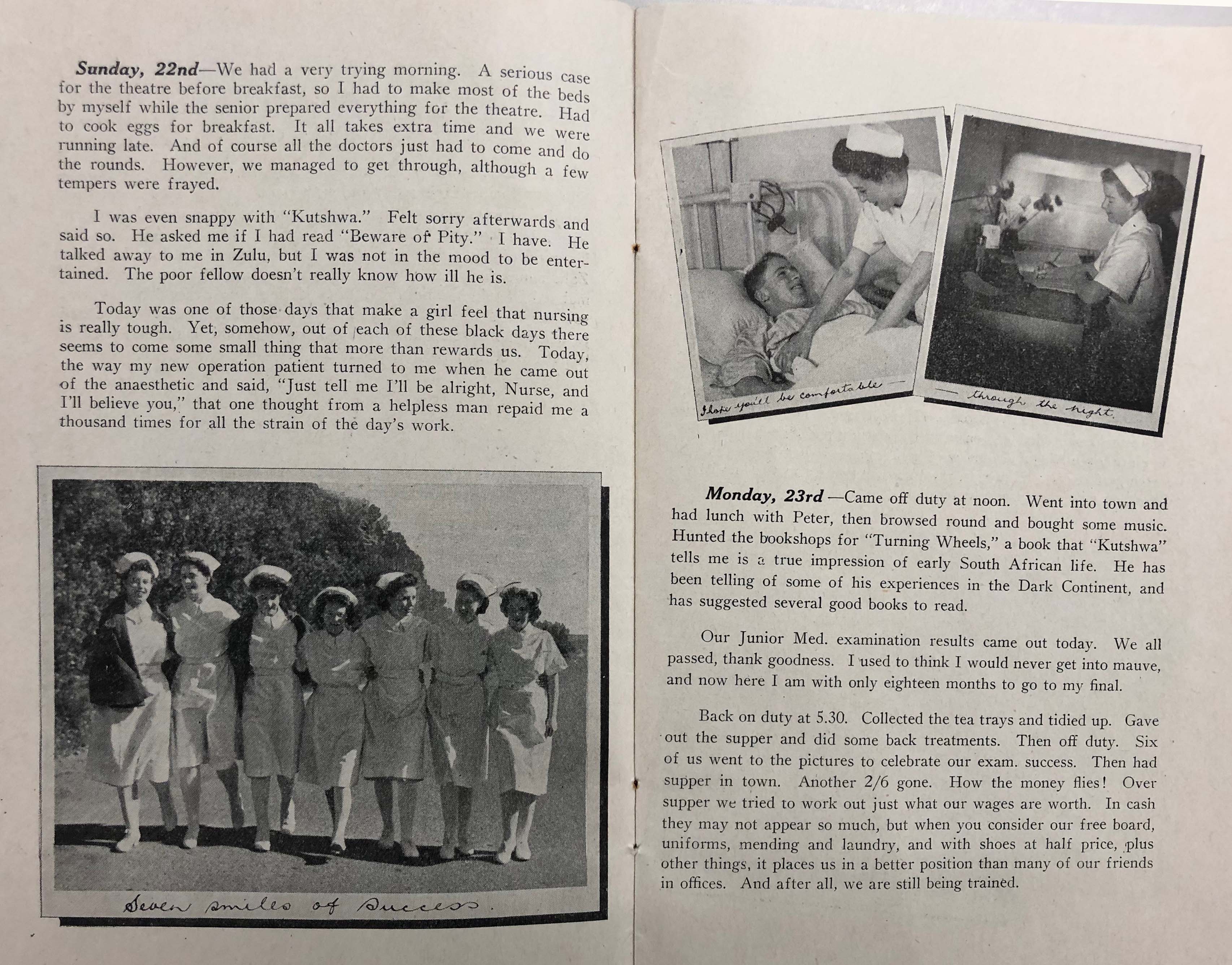
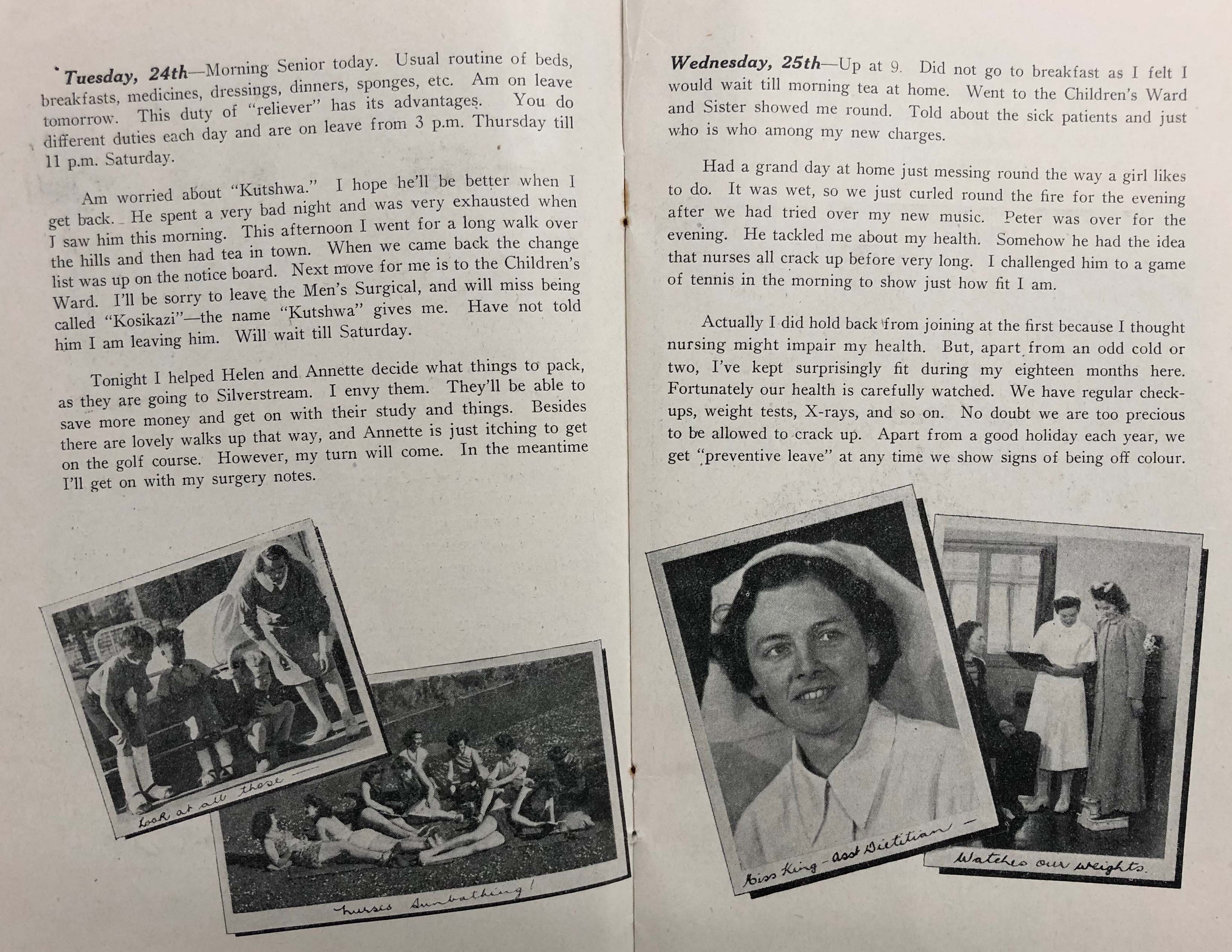
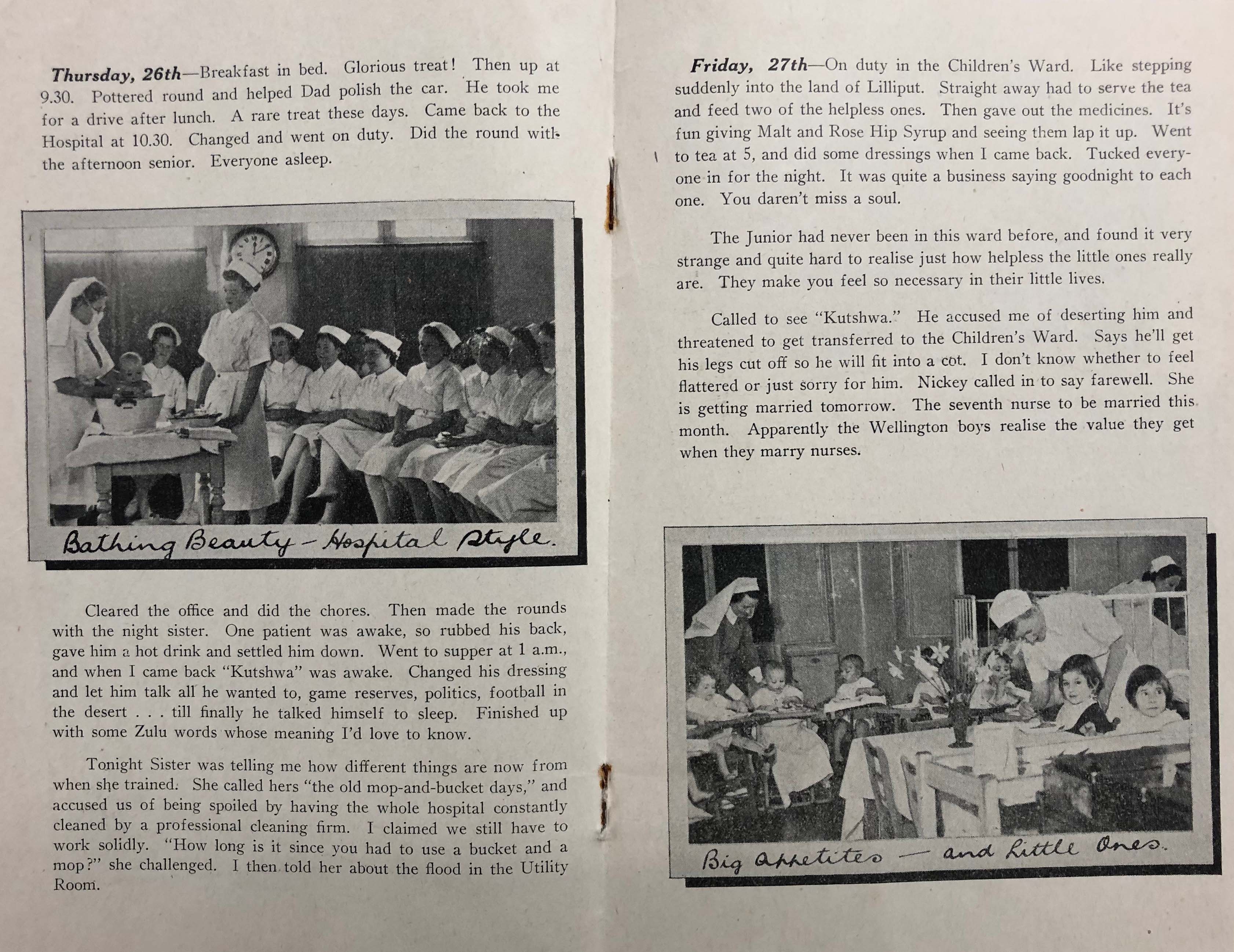
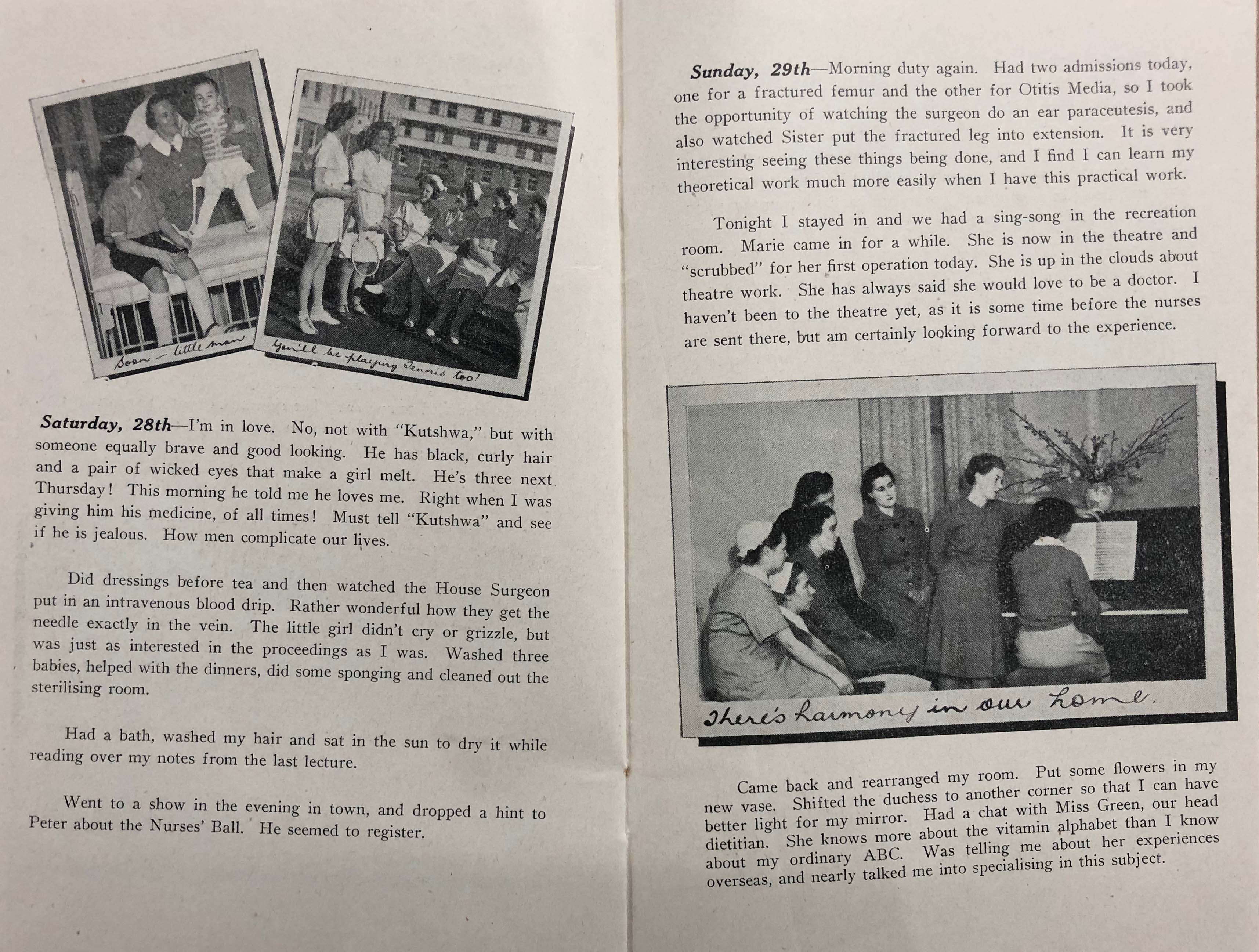
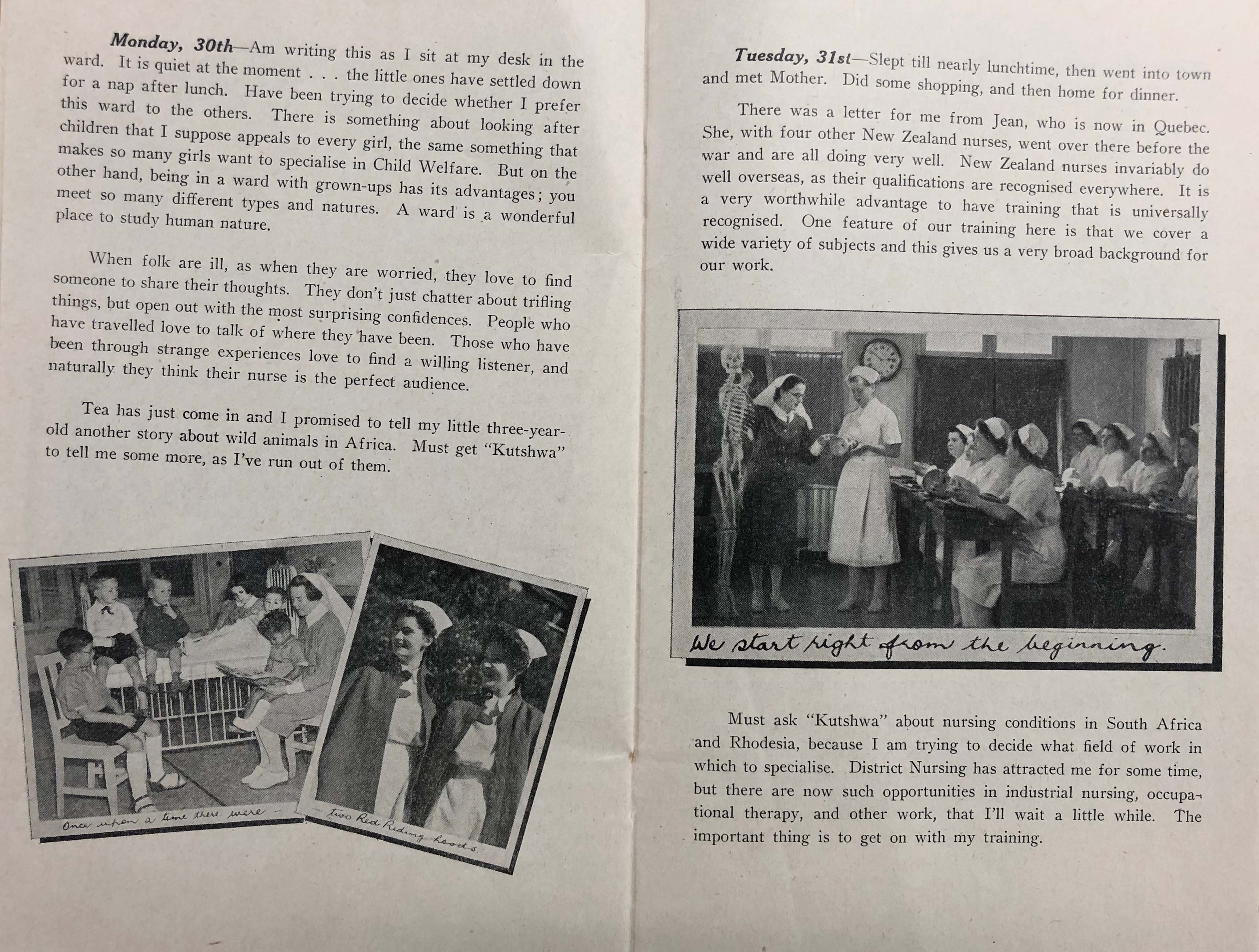
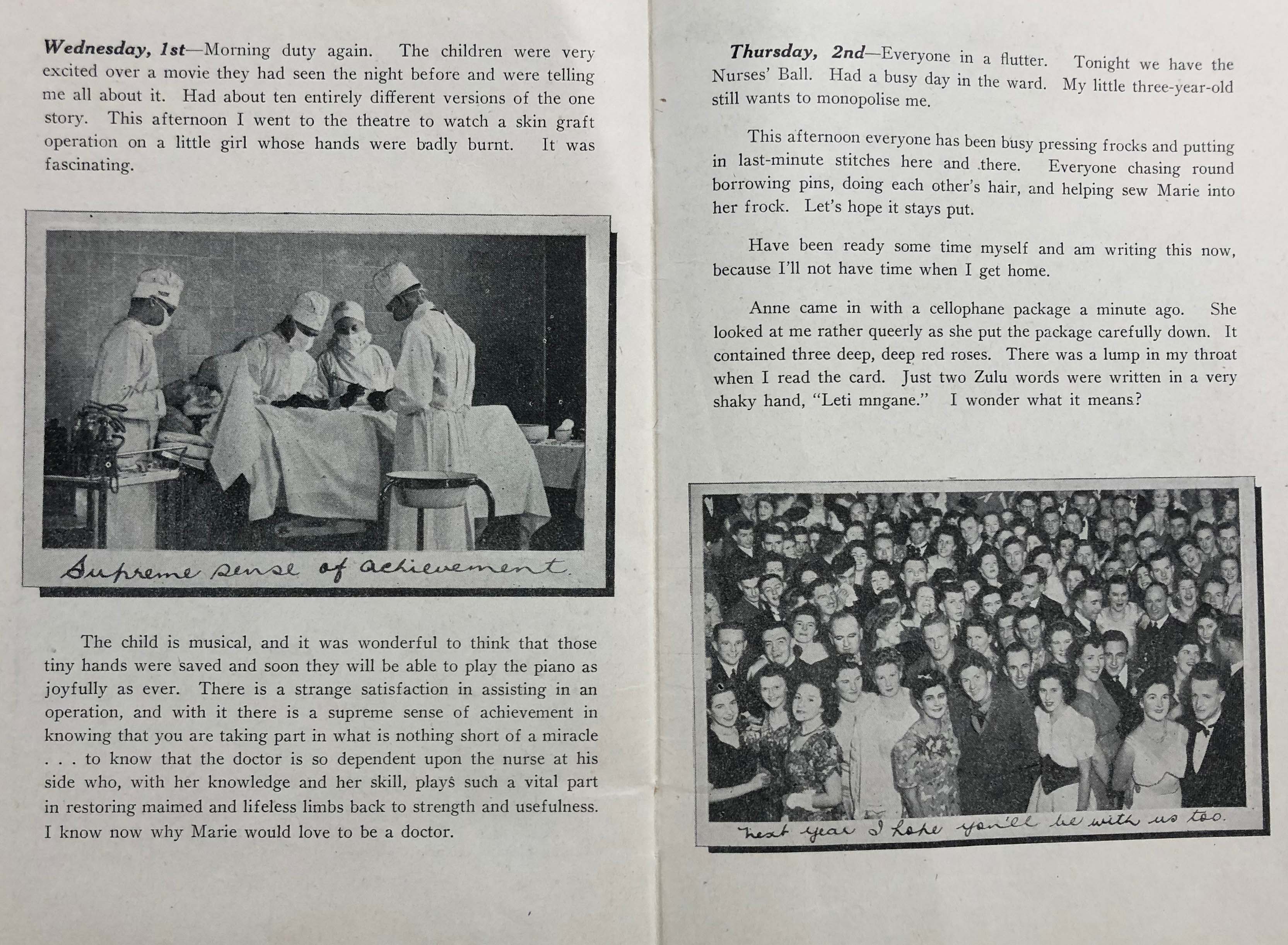
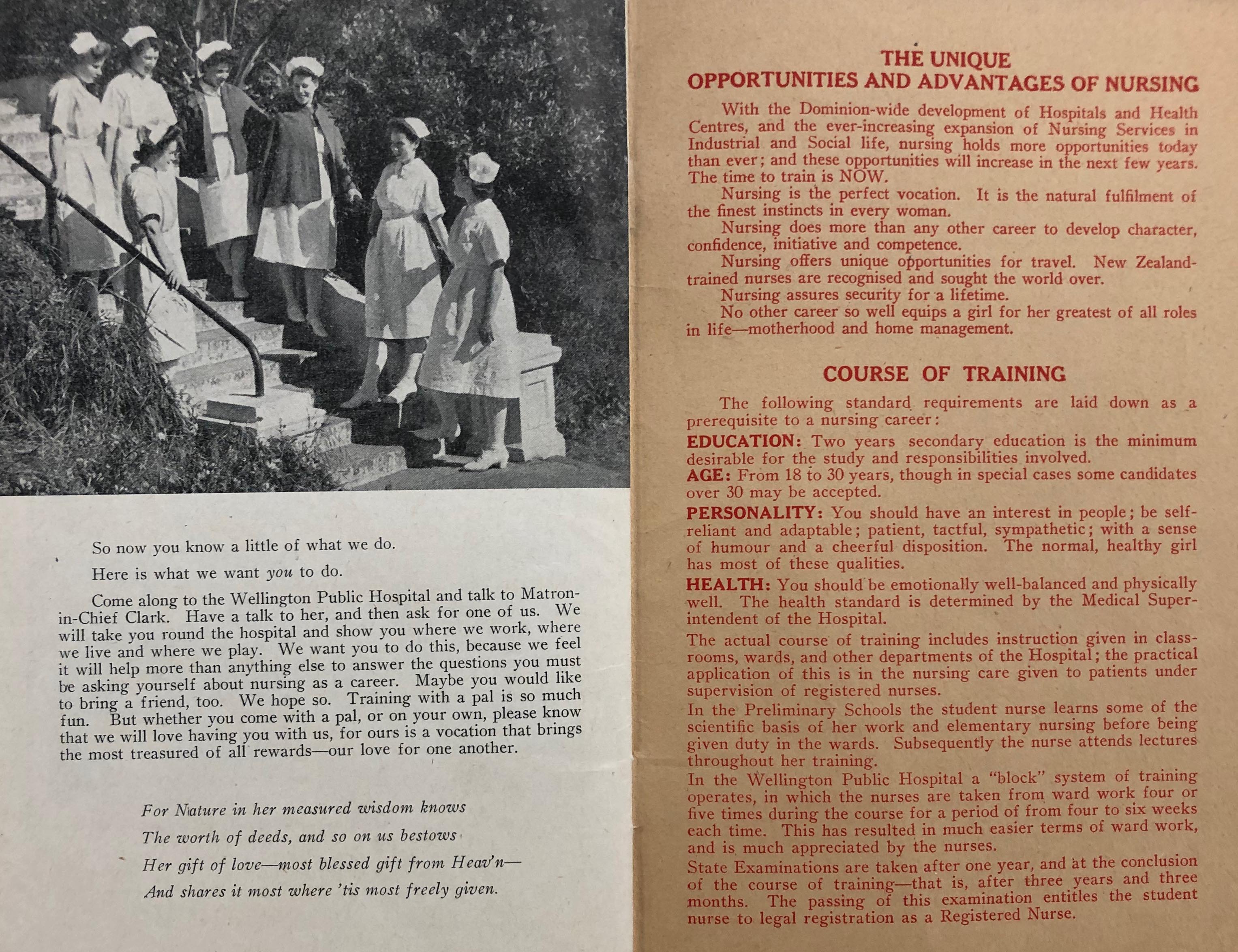
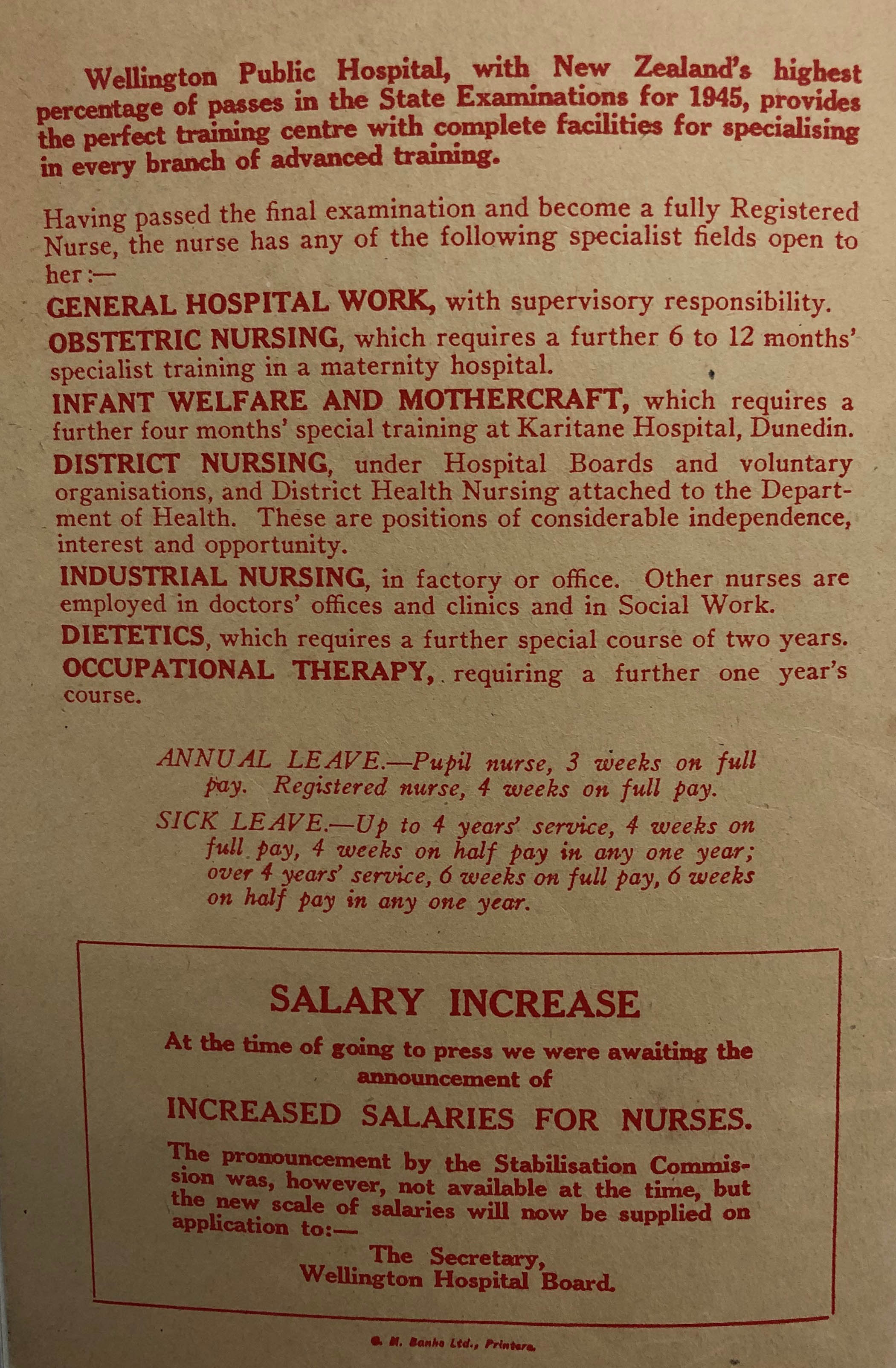
In 1947 the following recruitment booklet was published:
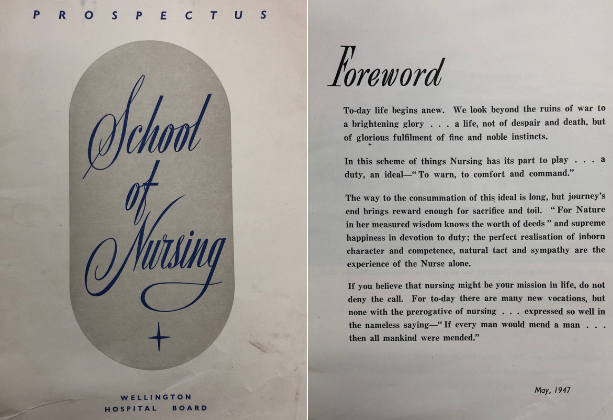
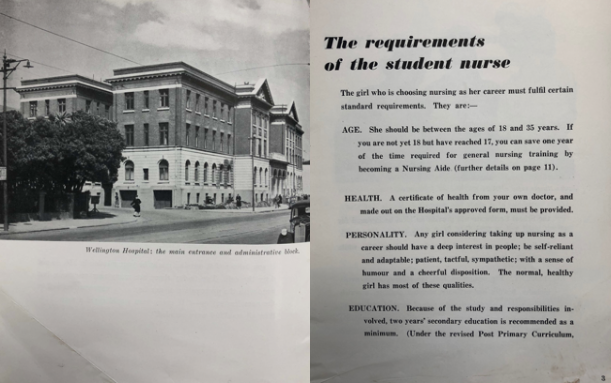
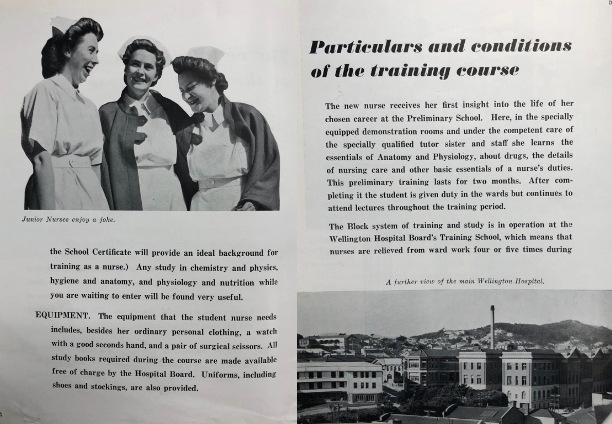
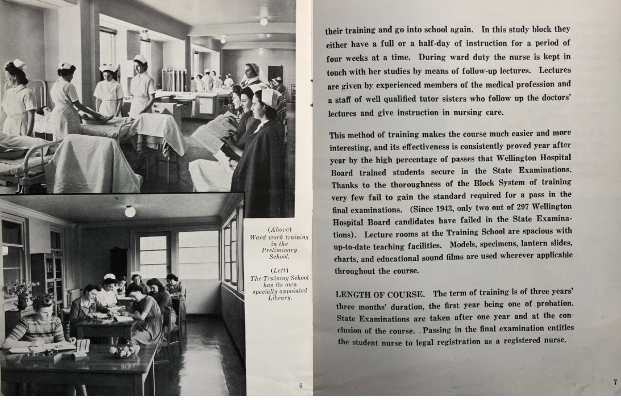
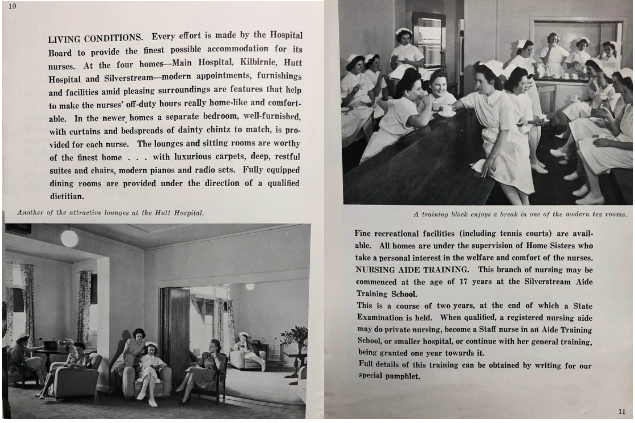
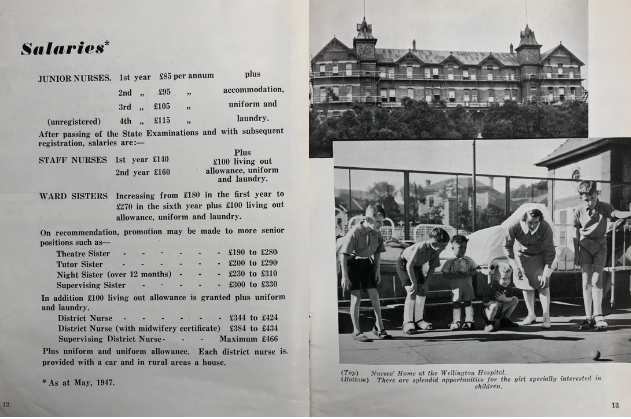
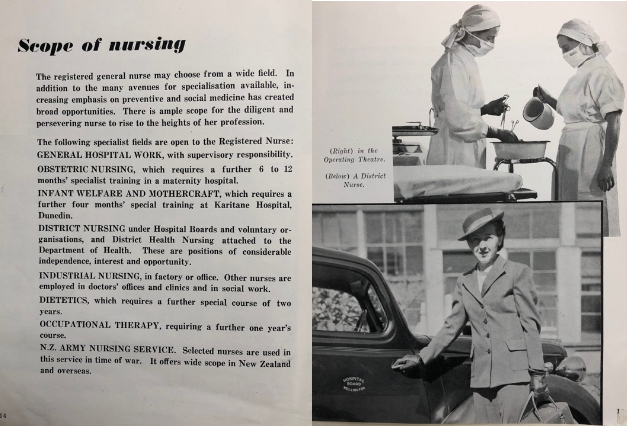
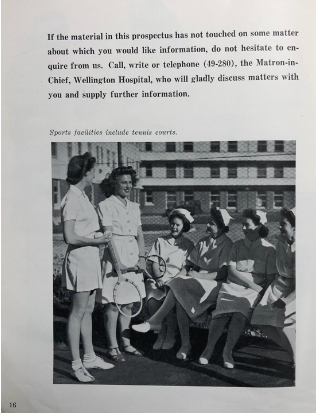
During the 1950s, the pamphlet below was used for recruitment:
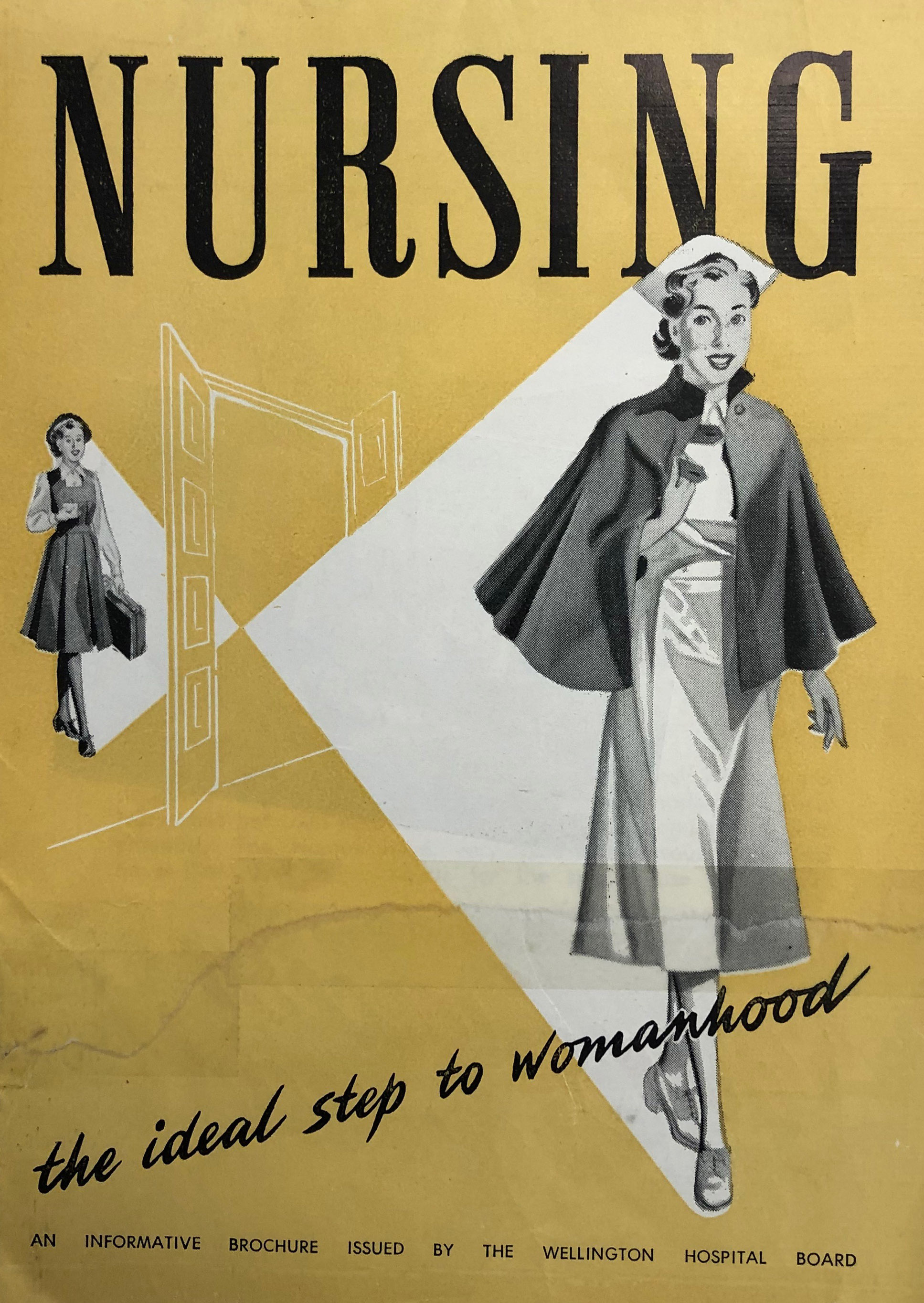
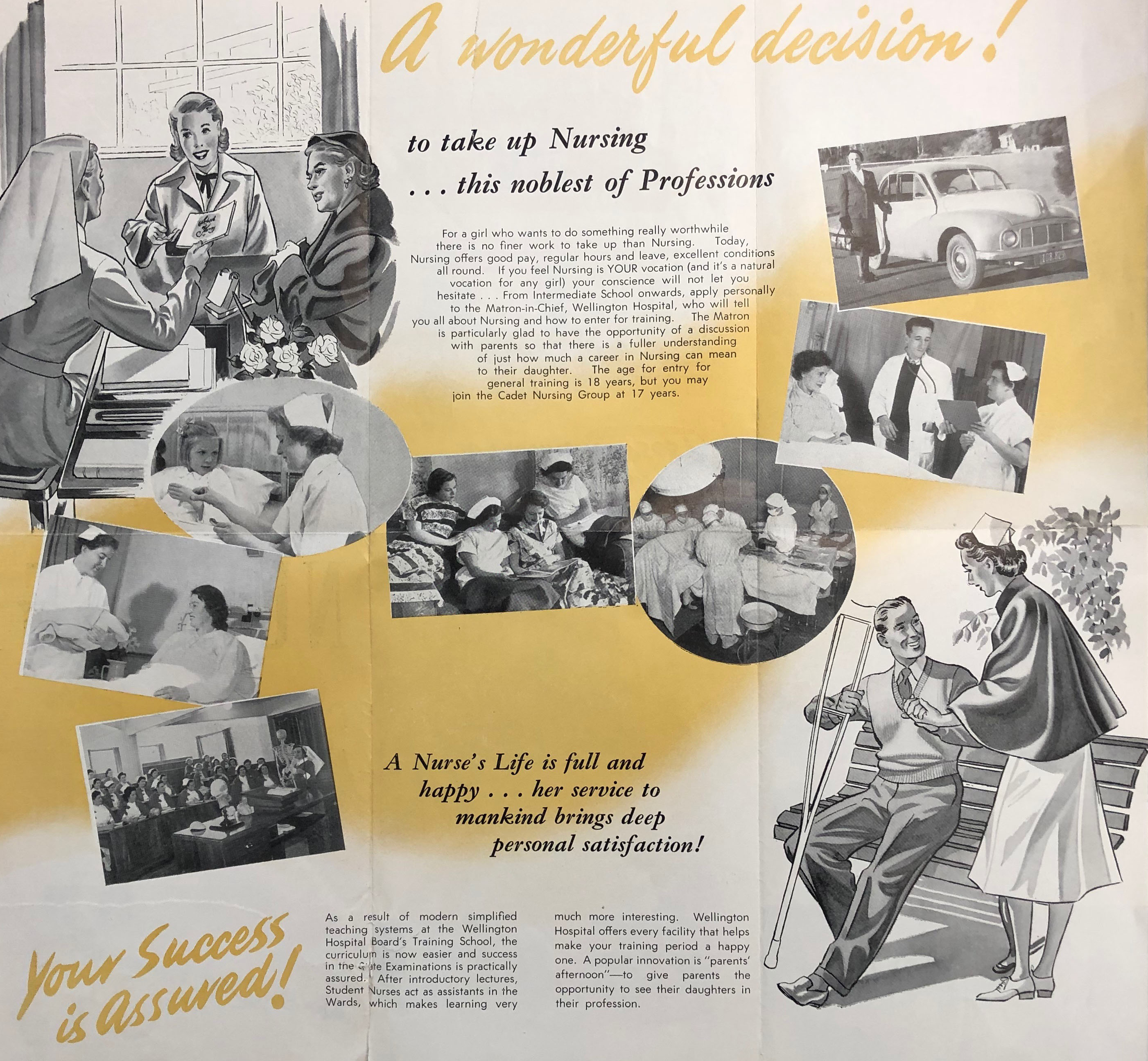
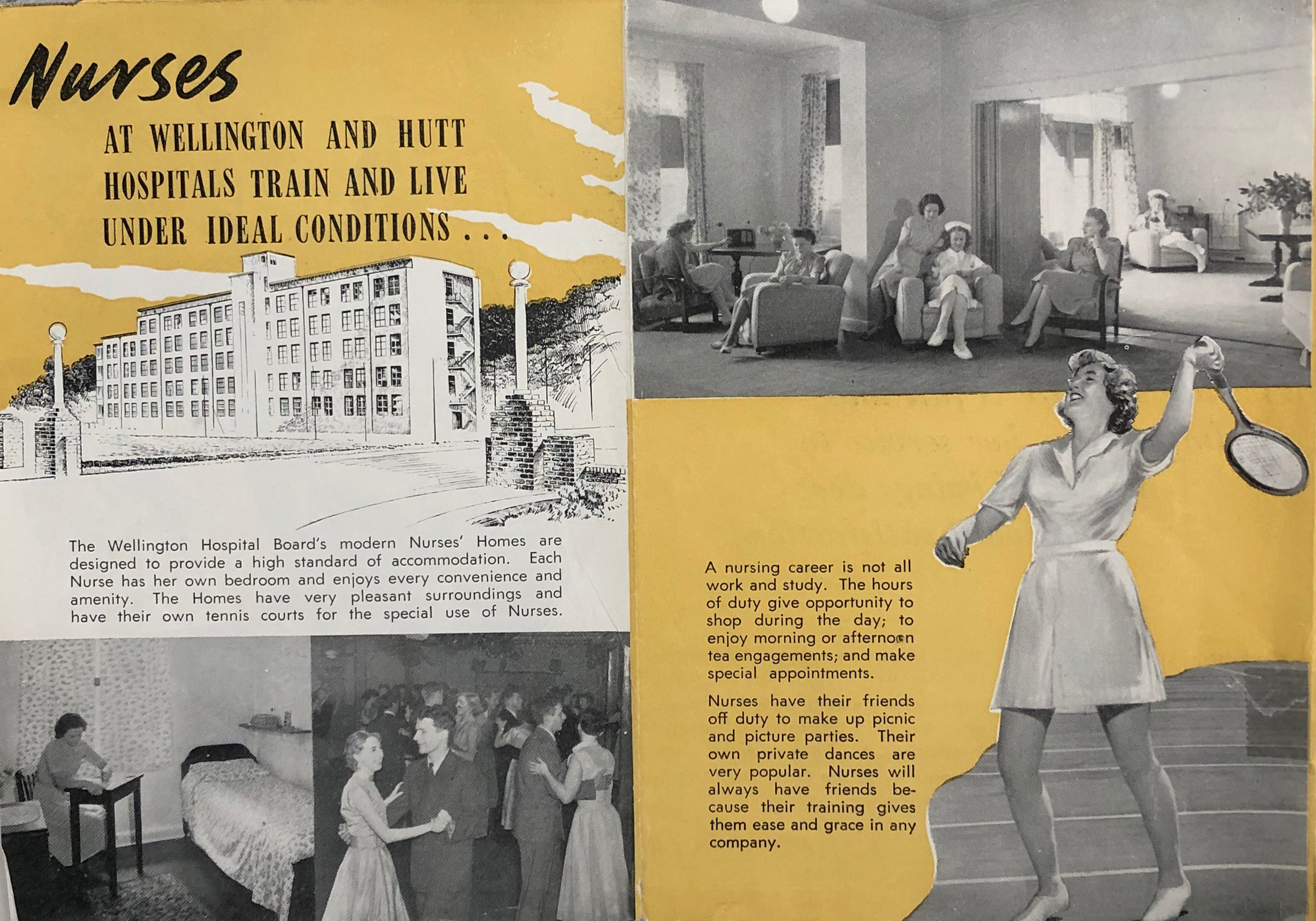
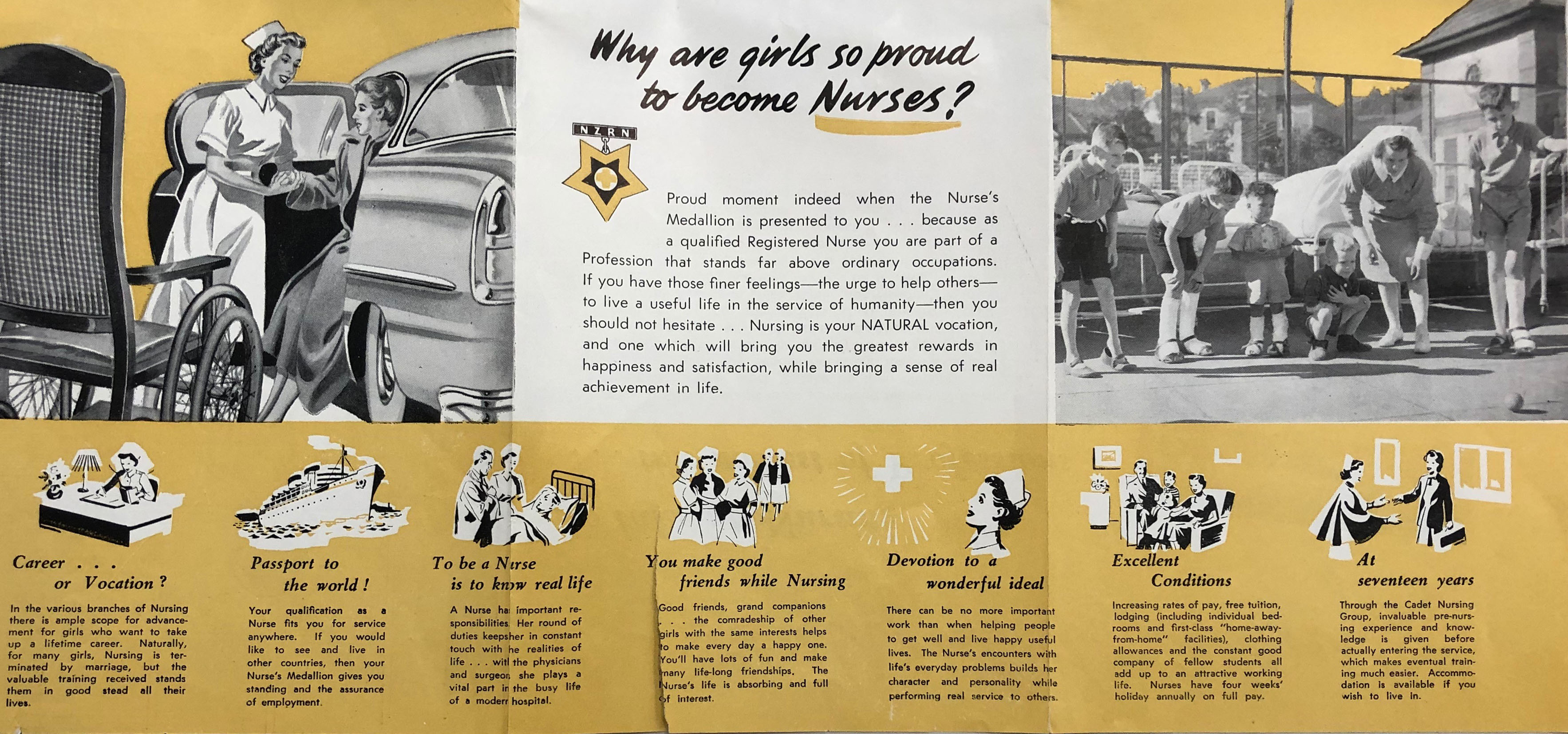
In 1960 the booklet below was published:

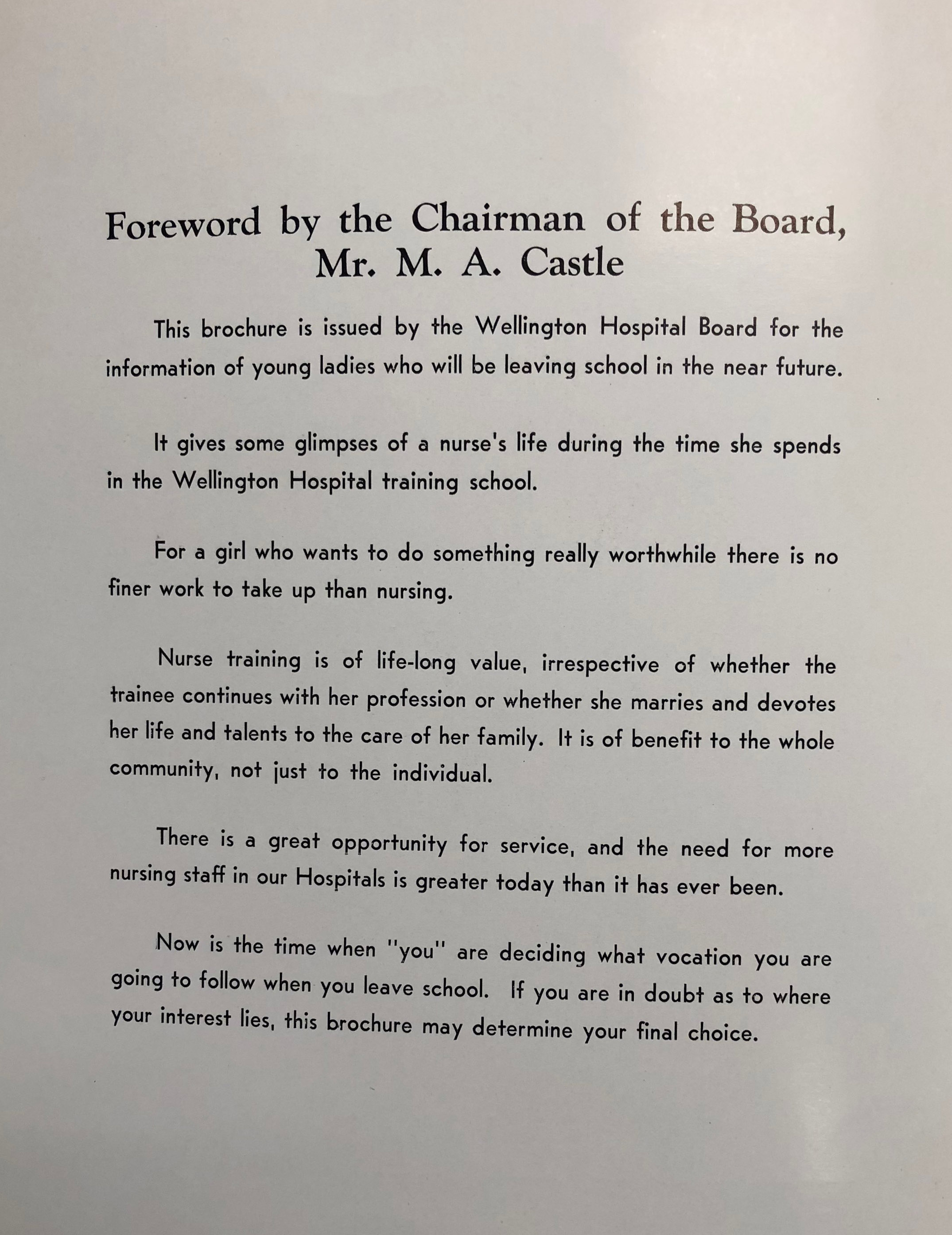
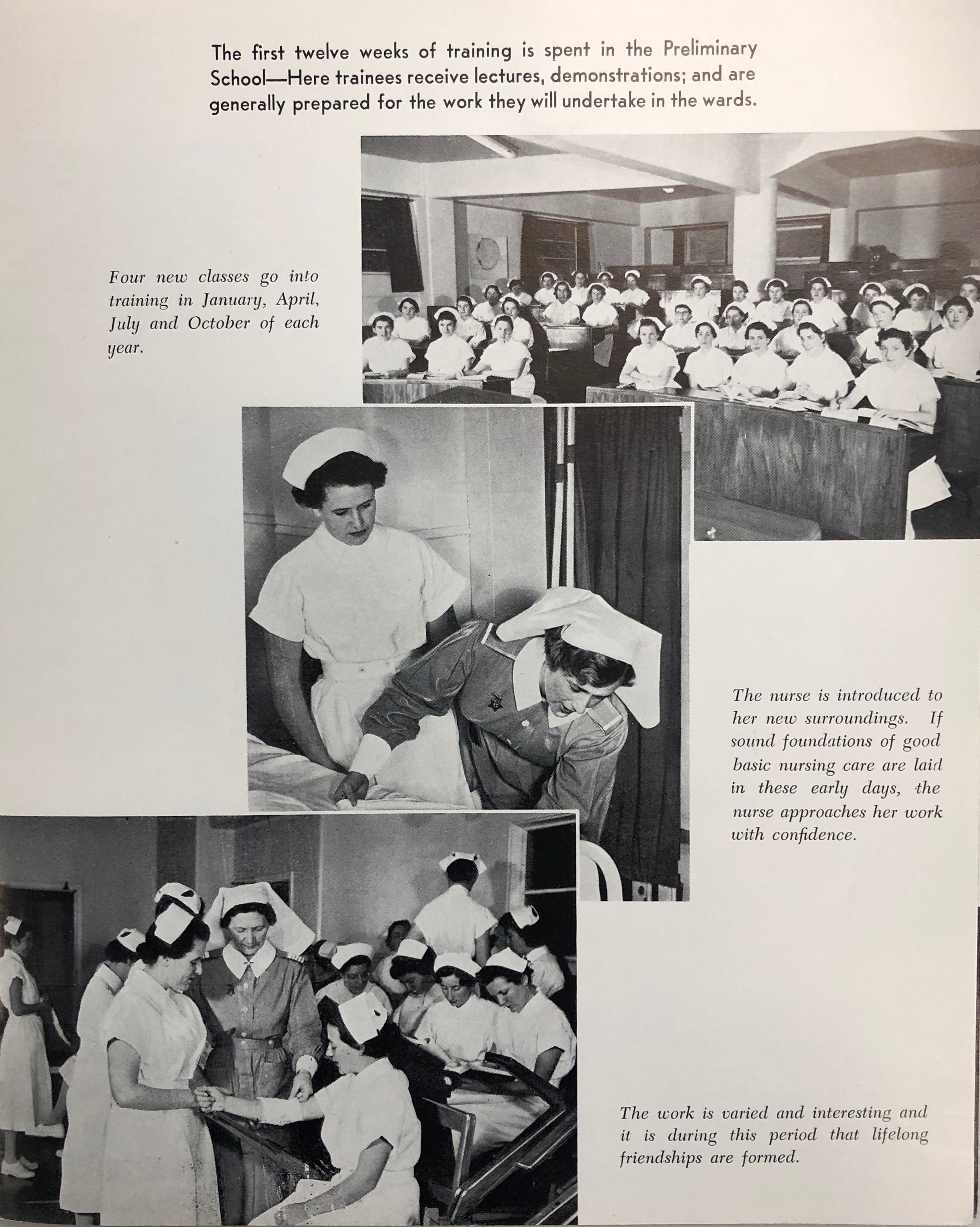
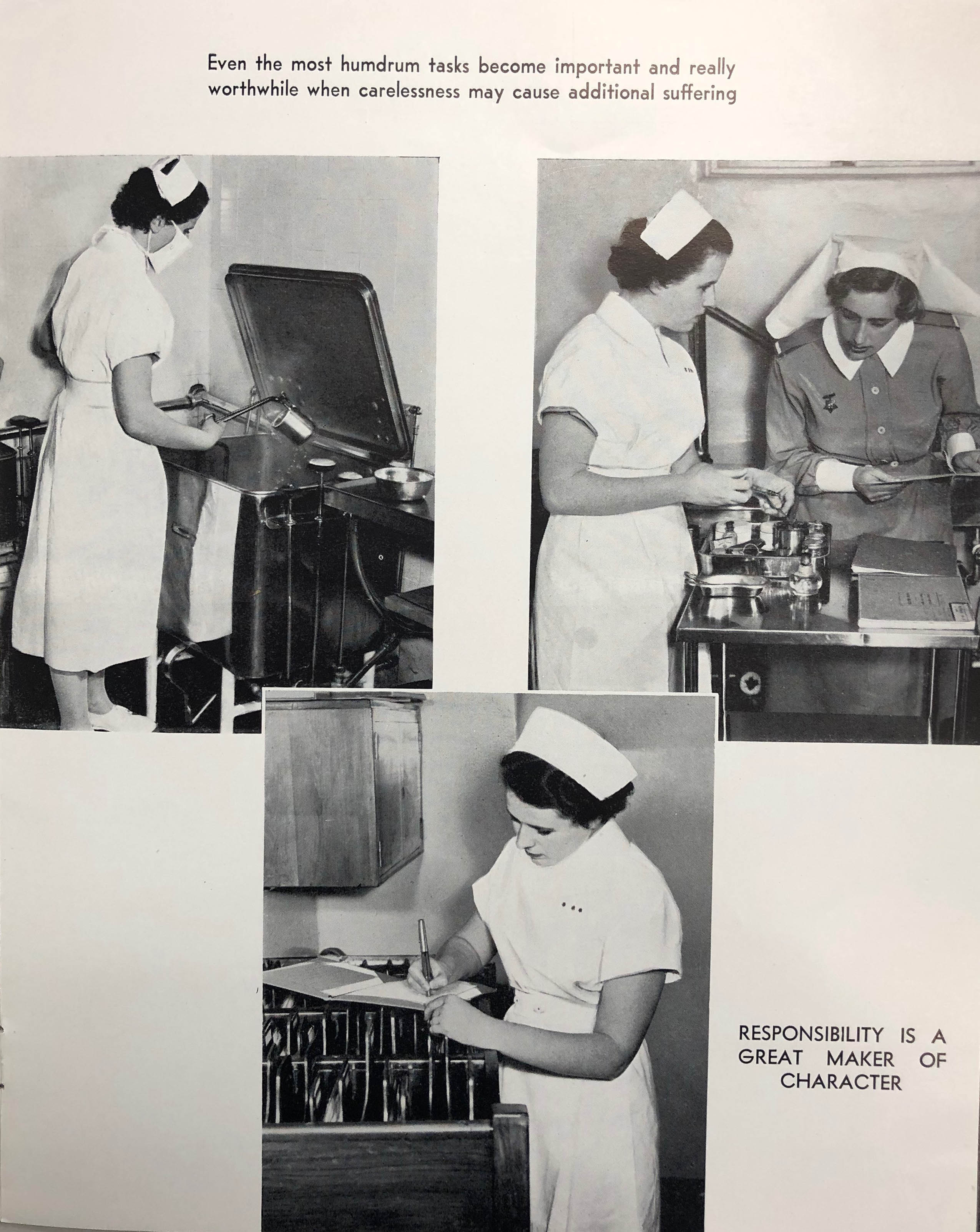
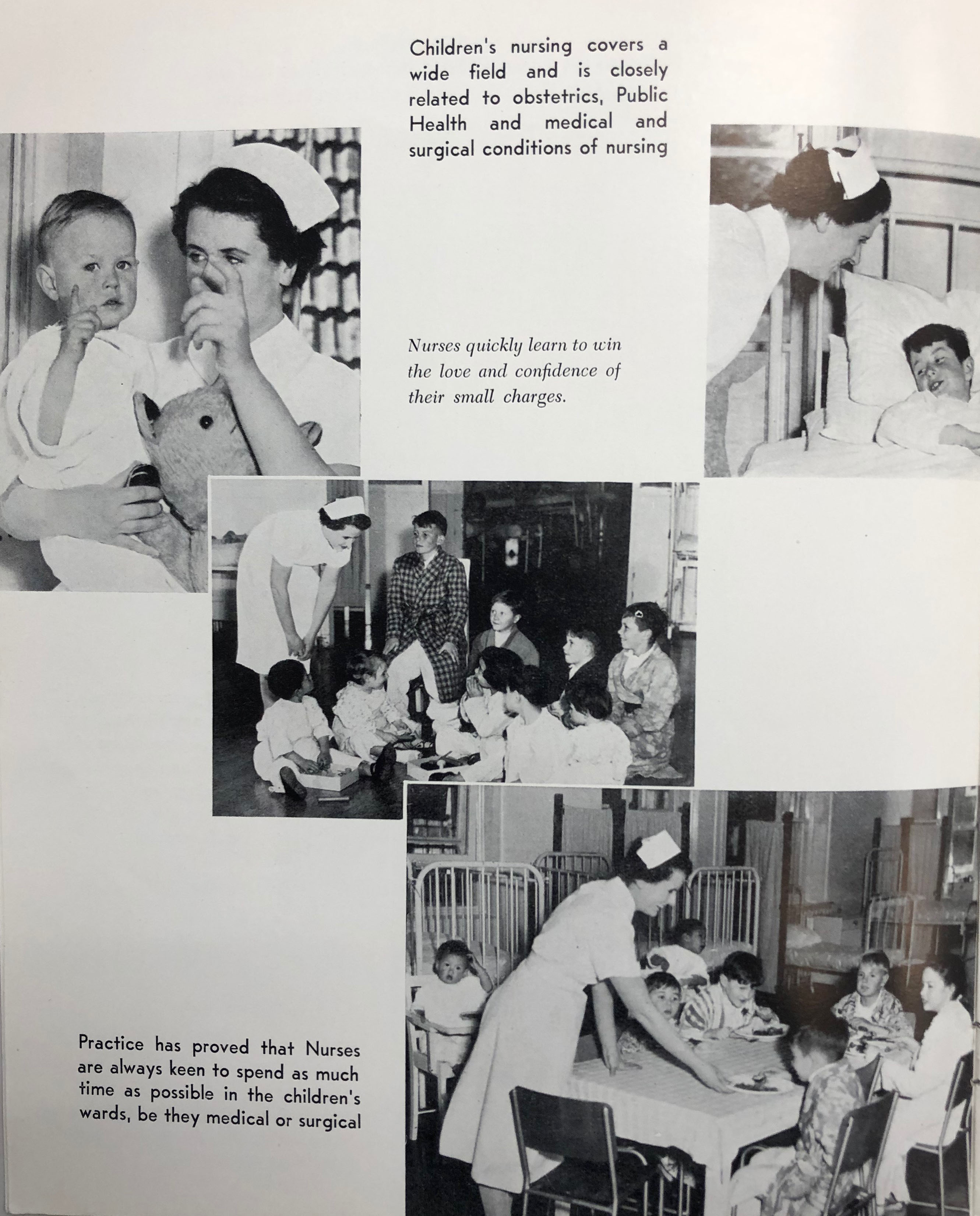
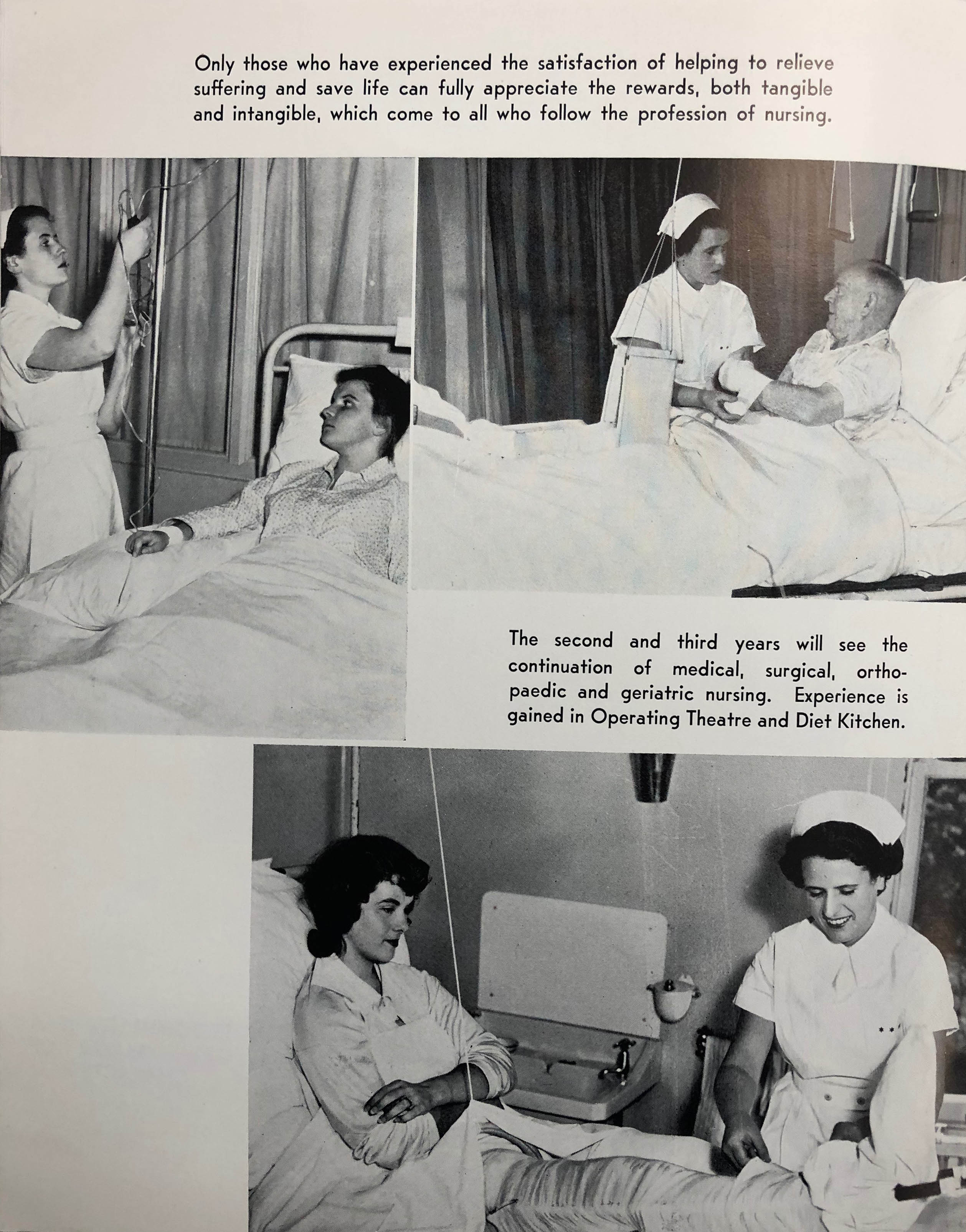
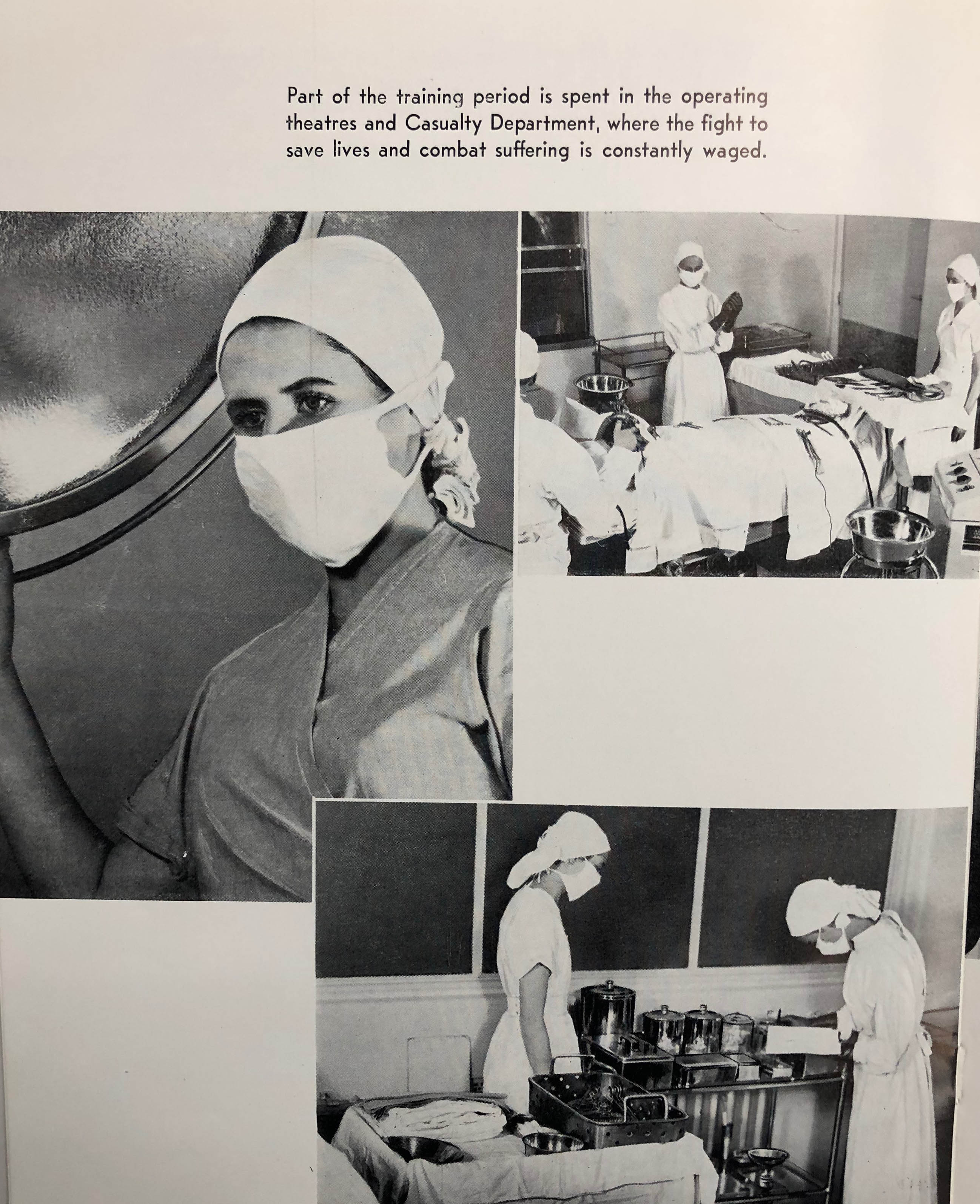
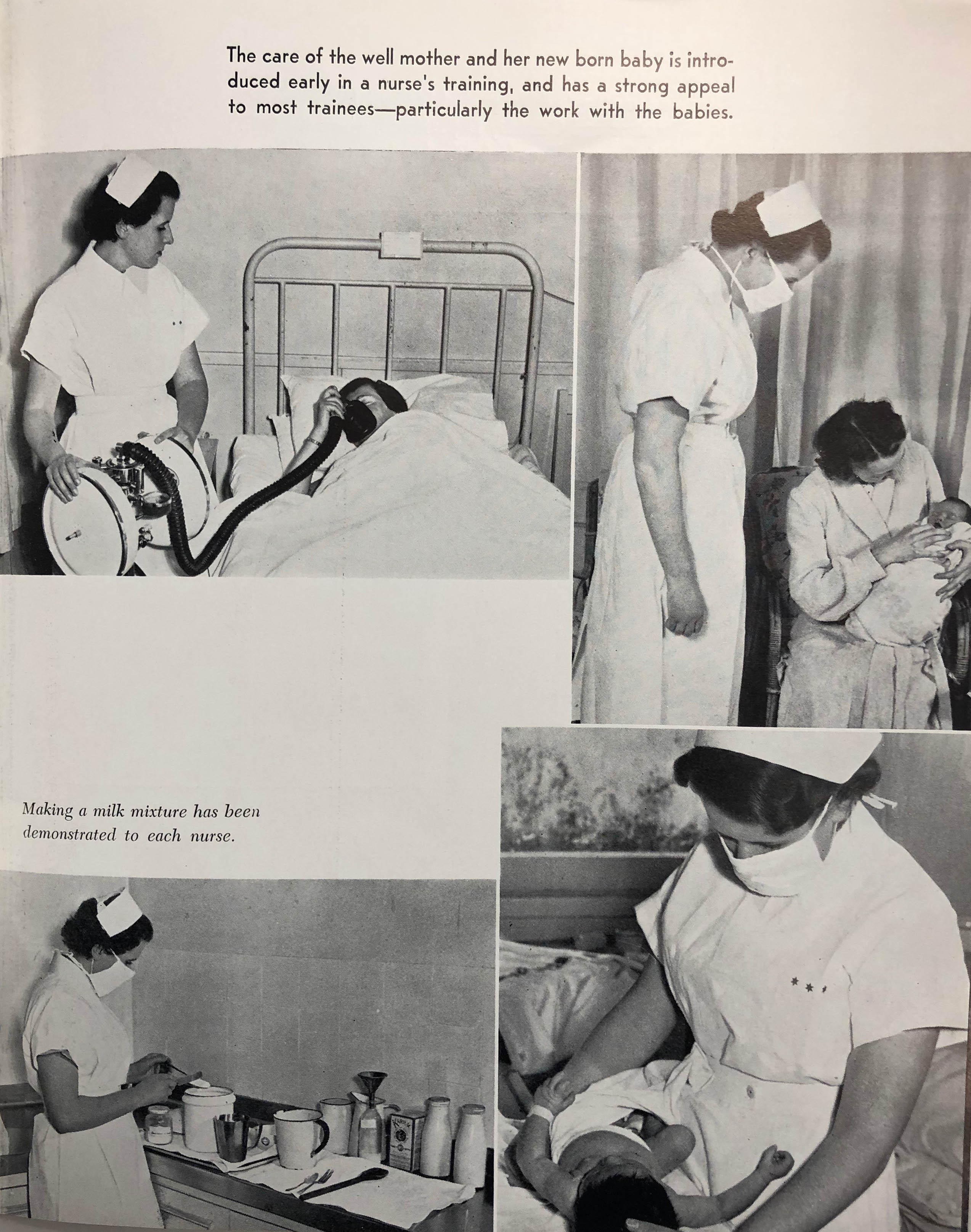
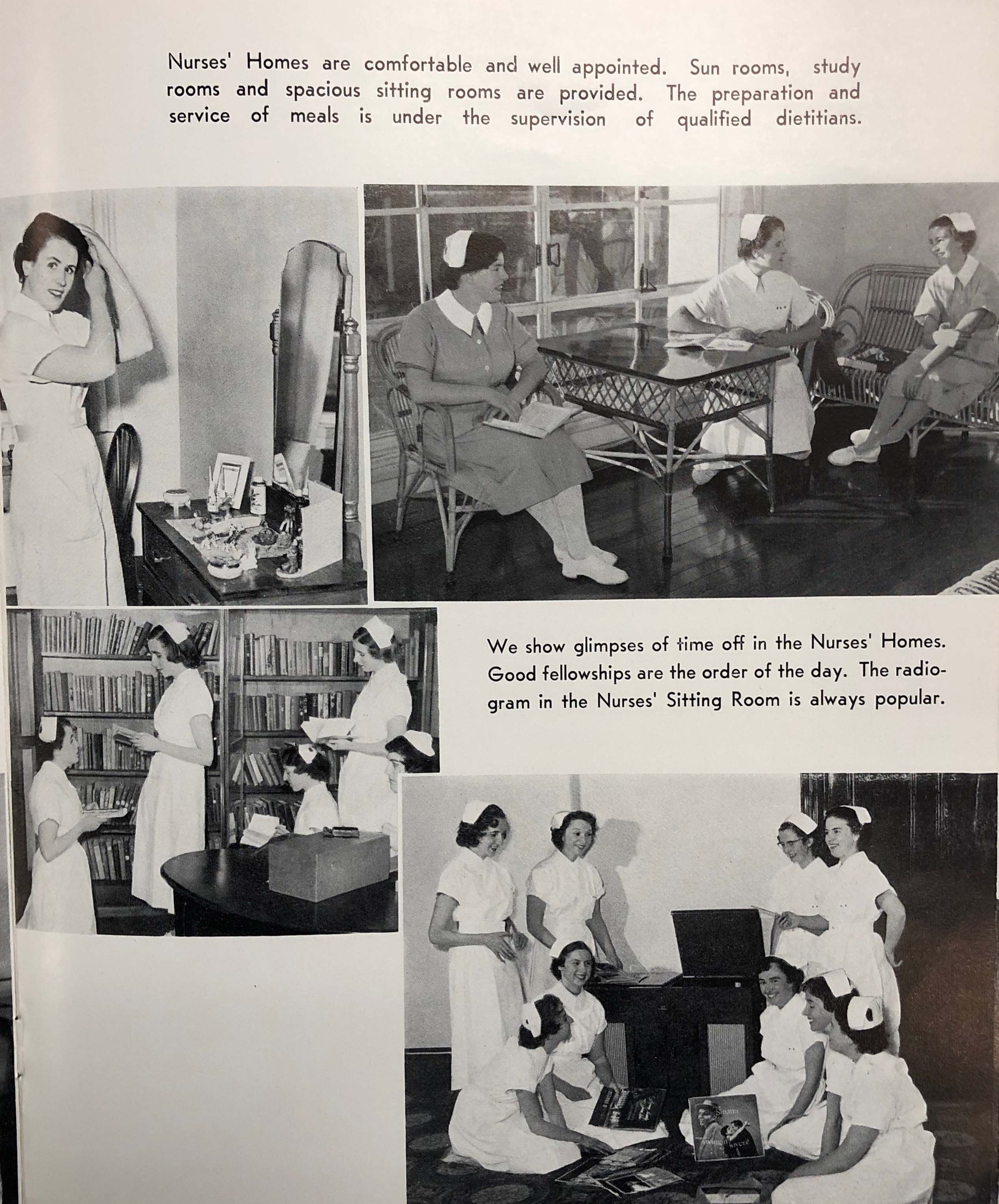
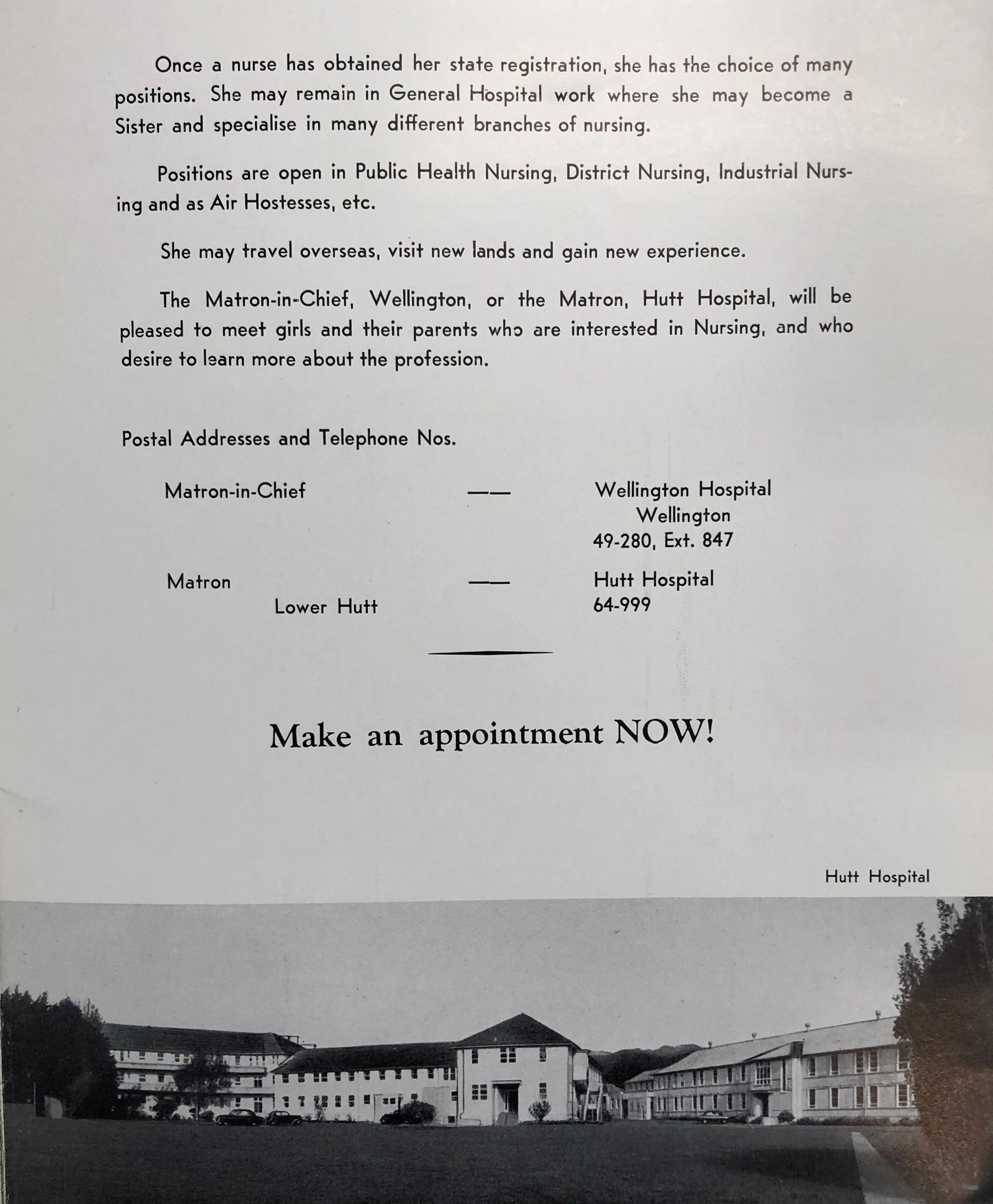
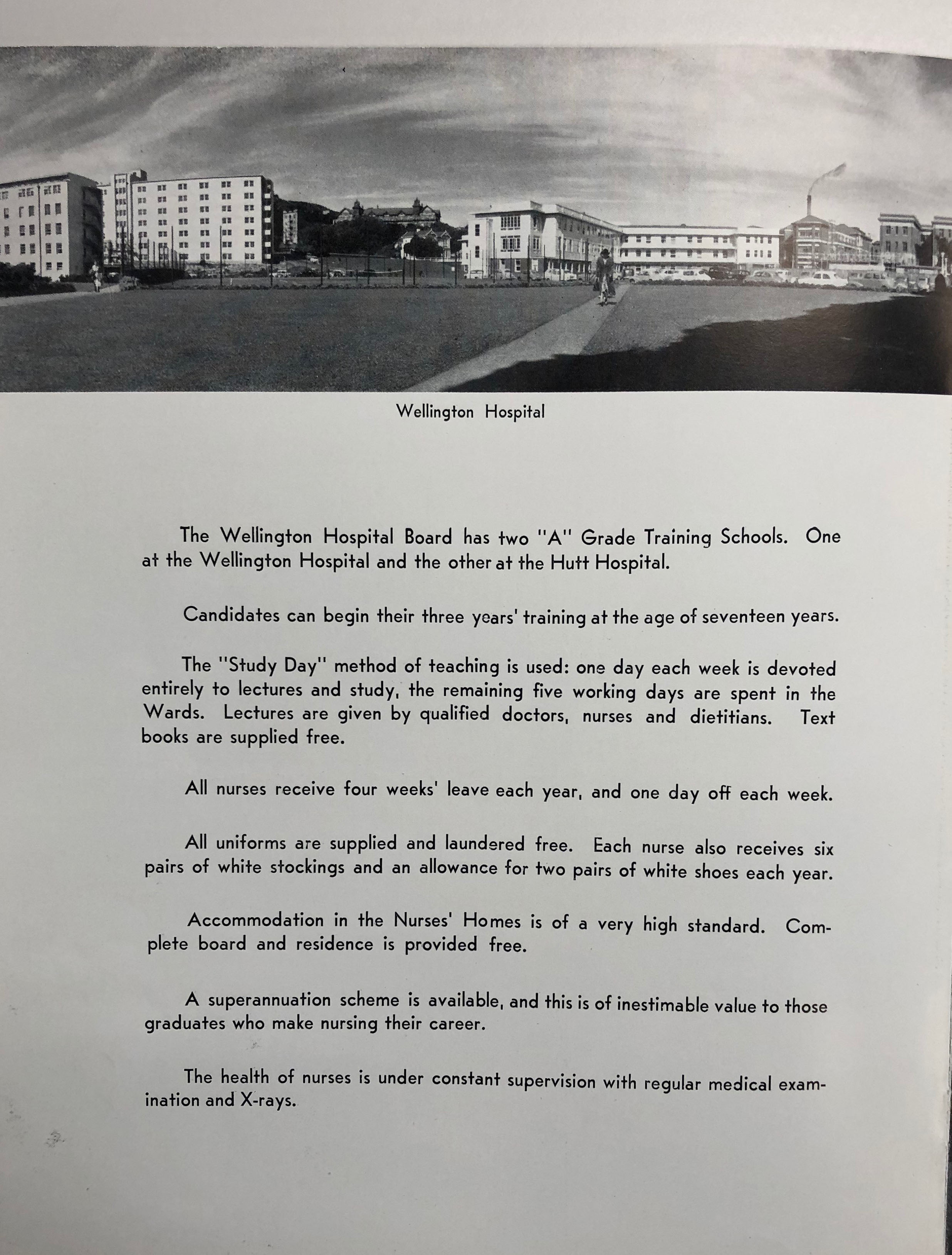
By 1969 recruitment was delegated by the Matron to the First Assistant Matron.
Ward Sisters and student nurses visited all secondary schools in the area and spoke to 4th form students. Once a year an invitation was sent to local 5th& 6th form students to visit the hospital. Brochures were handed out and a recruitment film was shown.
Potential applicants who visited the hospital saw the display shown below:
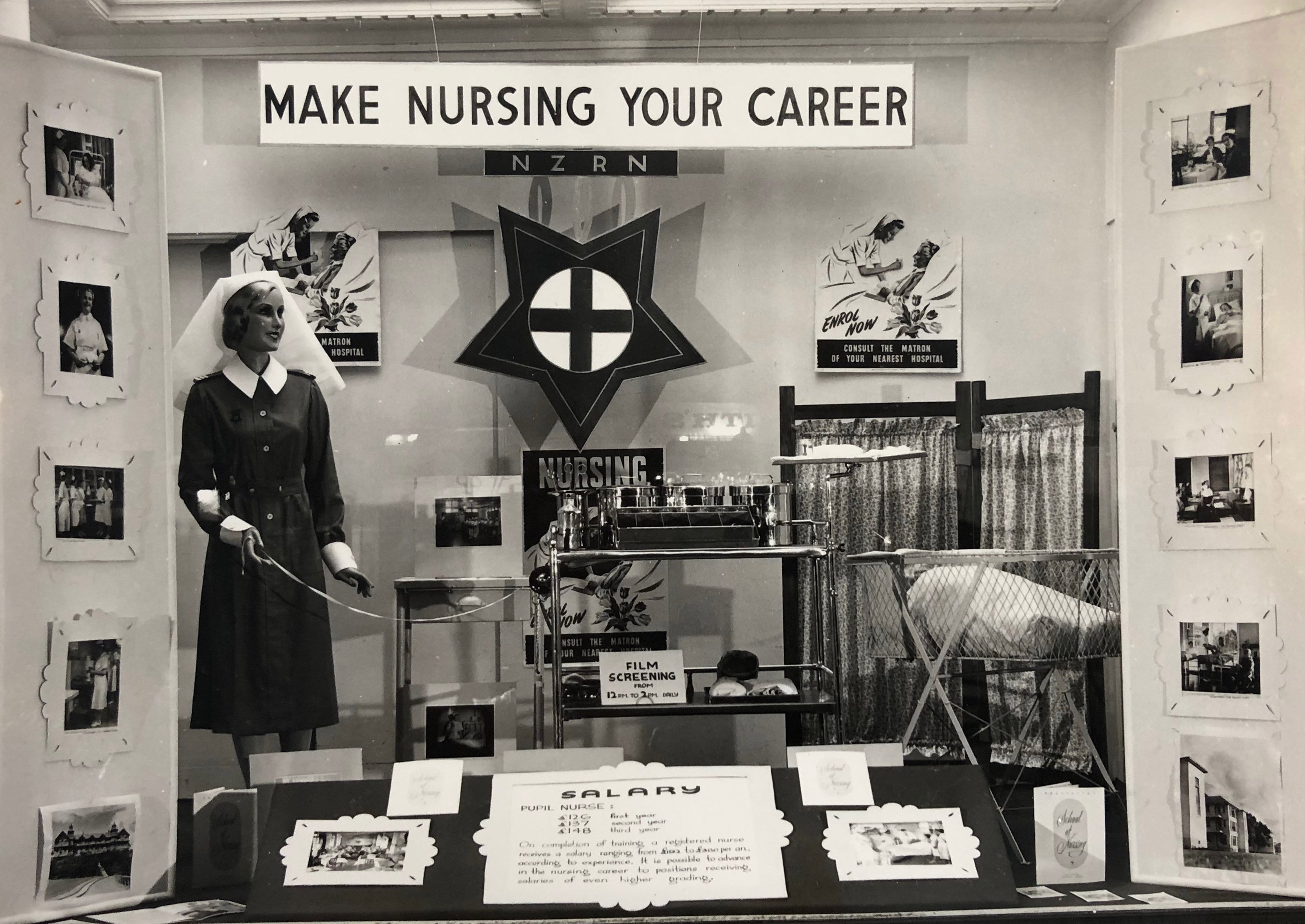
Selection
Applicants to study at the school of nursing were required to be of a specified age. The eligible age in 1905 was specified as between 23 and 35yrs. In 1918, with a significant number of nurses still overseas on active service, the minimum age was reduced to 20yrs. A further reduction to 19yrs occurred in 1920, based on the fact that the Nurses Registration Act specified that the minimum age for registration (having completed training) was 21yrs. By 1947, the minimum entry age was 18yrs and this remained so until 1958 when a further reduction to 17yrs occurred. Interestingly, in 1977 nursing student representatives at the hospital made a plea for the minimum age to be increased to 18yrs as they believed that 17yr-olds were too immature to handle some of the tasks assigned to them in the clinical areas.
For many years there were no specified educational requirements for applicants. Information on educational levels of applicants is not available for the first 40 years of the school. In 1937 the Nurses and Midwives Board strongly recommended that at least two years secondary education should have been completed but this doesn’t appear to have been compulsory. In 1949, 6% of applicants had had no secondary education and another 6% had only one year. Four years later, the figures were 3% and 6% respectively. However the majority of entrants in these years had attended secondary school for three or more years and a significant number had passed school certificate or higher qualification. By 1969, 98% of the intake had received greater than two years secondary education, and 94% had achieved School Certificate or higher. The minimum requirement was that entrants had achieved a 45% pass in School Certificate English.
Selection was based on an interview, for many years by the Matron. By 1969 this duty was delegated to the First Assistant Matron.
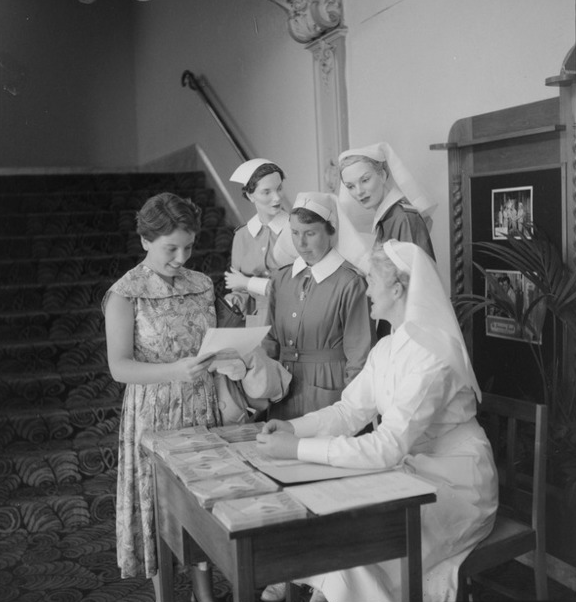 This photograph shows the Matron, Miss Cook, interviewing a prospective new entrant in the 1960s.
This photograph shows the Matron, Miss Cook, interviewing a prospective new entrant in the 1960s.
top